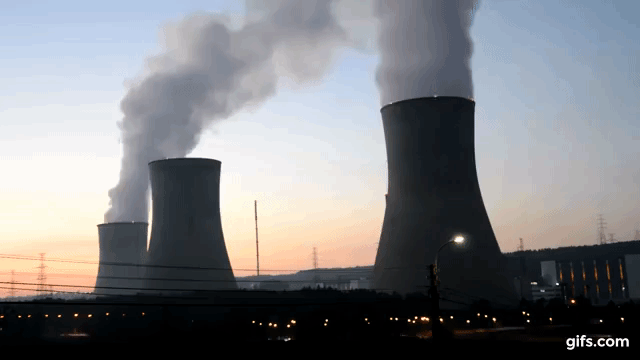In the past several years, Central Asia has been gaining prominence in the global energy sector. While the Middle East remains to be the vital energy exporter to key markets across the world, the recent development of Central Asia’s energy and oil & gas facilities has allowed it to increasingly perform a significant part in delivering the energy needs of crucial markets.
Central Asia, comprising the former Soviet republics of Kazakhstan, Tajikistan, Turkmenistan, Kyrgyzstan Azerbaijan and Uzbekistan, has, in fact, long possessed immense volumes of oil and natural gas. It has estimated reserves of between 110 billion and 240 billion barrels of crude oil, valued at around USD 4 trillion. Unfortunately, they have largely remained underdeveloped due to lack of infrastructure. Owing to this, it was tremendously difficult for regional energy producers to transform the region’s raw natural resources to profitable output and to find suitable methods of delivery to target markets around the world.

Central Asia Energy Sector (Photo credit: Pinterest)
With the presence of Soviet influence over the Central Asia’s energy sector, the region’s oil and gas resources were predominantly delivered to Russia, and from there channeled to other markets of Western Europe. But after the collapse of the Soviet Union in 1991, the Central Asian states sought to open their energy resources to new markets and started to take progressive initiatives to diversify their export destinations.
The instrumental partnerships: China
Central Asia’s quest to develop its energy sector on the heels of the fall of the Soviet Union was largely met with various challenges. The region’s perceived geopolitical risks, lack of industrial and civil infrastructure, and demographic difficulties had all reined in the development of its oil and gas industry.

Central Asia Energy Sector (Photo credit: Pinterest)
In recent years, however, the tide has dramatically turned for Central Asia, as it found important energy partners in its neighbors, most notably in China. Aside from being a viable final point of trade, China’s investment towards Central Asia largely contributed to the rapid development of the region’s oil & gas resources, and in the stark regeneration and expansion of its energy market.
China has been actively involved in various oil & gas projects in Central Asia, particularly in Kazakhstan, funding construction works and supplying technology and equipment, mostly to the upstream sector. Investing in Central Asia’s energy industry is a key component of China’s strategy to strengthen its oil & gas sector to, first, meet domestic energy demand and, then, export high-value energy products to key markets of the world.

Central Asia Energy Sector (Photo credit: Flickr)
China controls an estimated 20% of Kazakhstan’s oil production, and has participated in the construction of one of the world’s most extensive oil pipelines, stretching 2,300 km from the Caspian Sea to Xinjiang province. The China National Petroleum Corporation maintains a significant stake in the Kashagan oil field in the Caspian Sea, while other Chinese companies control several strategic oil fields around Aktobe, a city in the west of Kazakhstan.
China also has a significant participation in Kazakhstan’s most successful oil & gas companies. Some of the regional energy companies with Chinese holdings include MangystauMunaiGaz, CNPC-AktobeMunaiGas, KazGerMunay, KarazhanbasMunay, PetroKazakhstan, Buzachi Operating, Turgay Petroleum, Caspian Petroleum Company, Kazakhoil Aktobe, and KarakudukMunai.
Aside from Kazakhstan, China has also become a significant customer and partner for Turkmenistan, Uzbekistan, Tajikistan and Kyrgyzstan. Regional energy companies, such as Tajiktransgaz and Uzbekneftergaz have signed agreements with China National Petroleum Corporation to cooperate in the construction of the Central Asia-China Gas Pipeline that facilitates the delivery of Central Asia’s gas resources to China.

Central Asia Energy Sector (Photo credit: Flickr)
Aside from Chinese oil & gas firms, Central Asia has also attracted international oil & gas majors to participate in geological surveys, exploratory activities and other energy-related processes. These include ExxonMobil, Shell, Chevron, Conoco and Eni.
The power to go further
The partnership with international oil & gas firms, particularly with those from China, has clearly accelerated Central Asia’s emergence as a significant player in the world energy market. The development of new energy infrastructure, exploration facilities, refineries and large-scale pipeline projects are expected to continue in the coming years, with more deals being signed among the Central Asian countries and prospective international investors.
Now, more than ever, a reliable source of electrical energy will be necessary to provide power to the existing energy facilities and to the future infrastructure construction projects in Central Asia. With market opportunities abound, Central Asia cannot afford to slow down at the risk of losing its momentum. This is the time when Central Asia needs a reliable power partner that can provide suitable power generation technologies to its energy market.
Temporary power plants represent a power generation technology highly suitable to Central Asia’s oil and gas market. They can be delivered and installed anywhere in the world, even in remote areas where oil & gas facilities are usually located or constructed. They can be configured in various ways so that they fit even in the limited spaces that are usually left available in oil & gas facilities.
Central Asia Energy Sector (Photo credit: Altaaqa Global Caterpillar Rental Power)
They are highly scalable, so that they can provide the precise amount of power needed in the different processes of an oil & gas operation. For example, an oil & gas operator can opt to start with a small power plant during the less energy-intensive stages, and then ramp up its capacity as operations expand and as processes require more power. This is particularly important for oil & gas investors because this eliminates the need to invest in permanent power plants at the early stages, which can be left inefficiently running at part-load most of the time.
Modern rental power plants are equipped with cutting-edge protection systems that ensure a safe operation within oil & gas facilities. Additionally, they will be expertly installed, operated and maintained by certified electrical engineers from the service provider, so oil & gas operators can rest assured that the power plants will remain efficient and reliable throughout the service.
For more information on the benefits of temporary power for oil & gas operations, click here
The remarkable potential
Industry insiders say that Central Asia is set to become a dominant player in the global energy market. Central Asia possesses some of the world’s largest oil & gas fields, and though several of which are already being developed, there still remain many areas in the region where substantial potential exists. As the region’s oil & gas sector is further developed by future regional and international investments, Central Asia will progressively gain prominence as a major producer of energy and fuels, and as a vital energy transportation link between various regions of Eurasia.
This article is sponsored by Altaaqa Global Caterpillar Rental Power


















